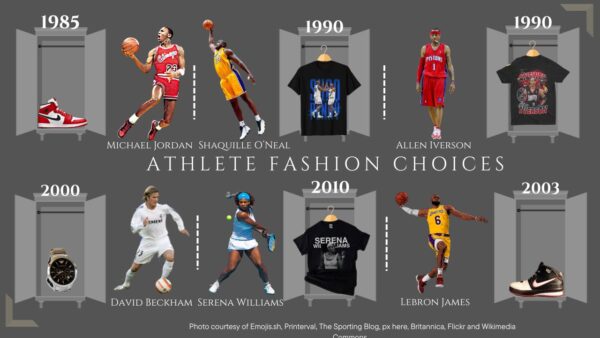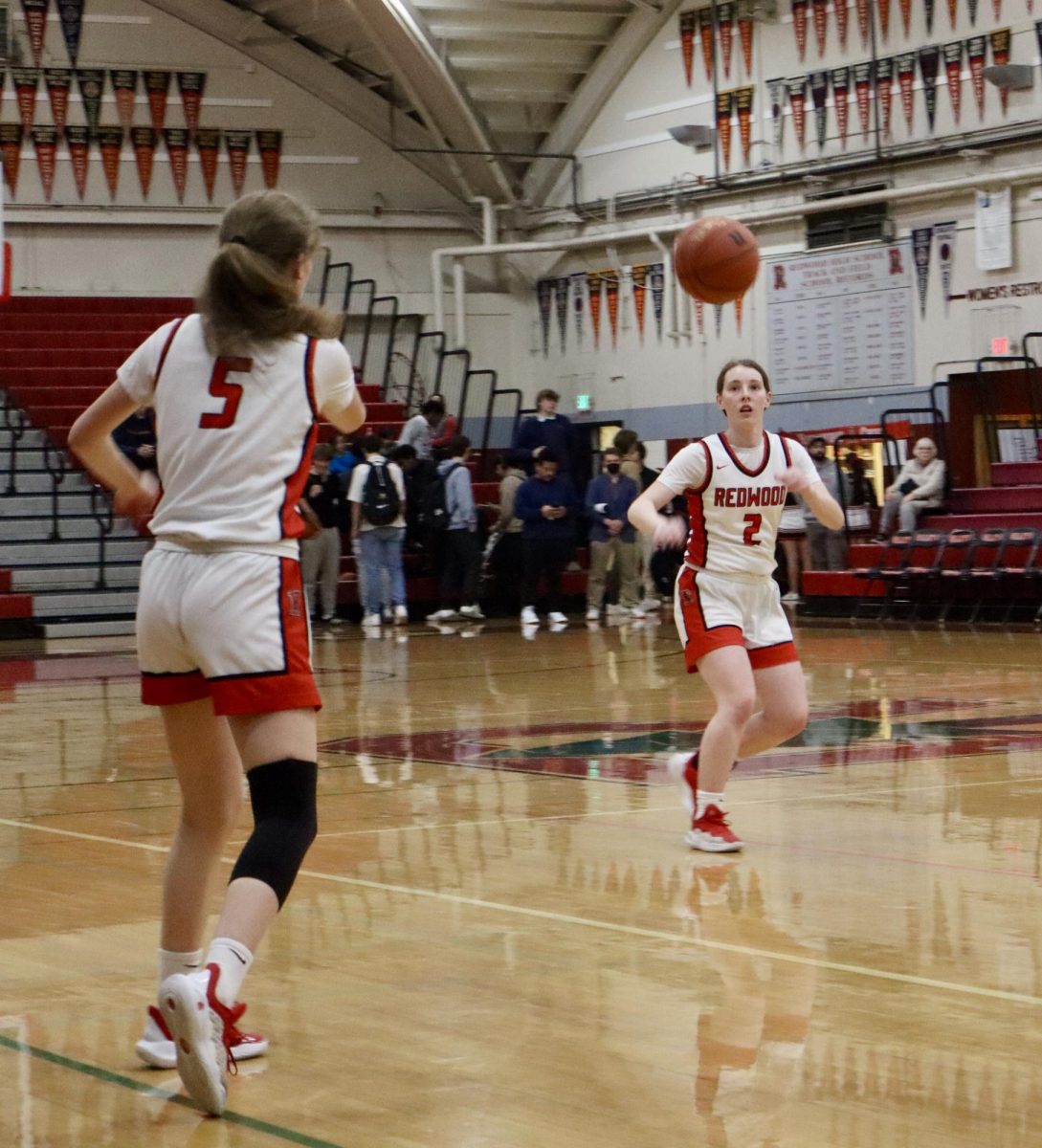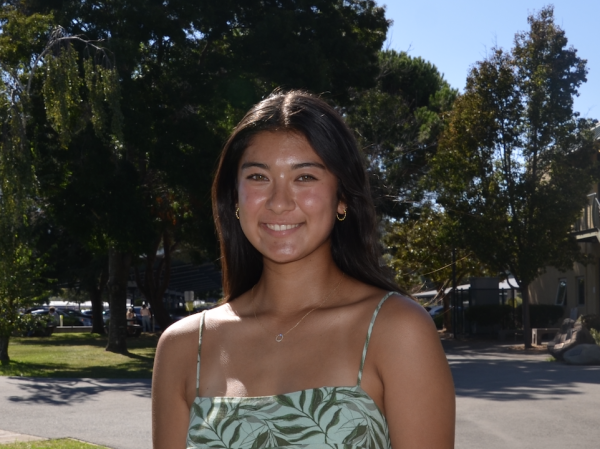Over the years, sports and style have gone hand in hand as athletes express themselves through fashion. The emergence of brand deals with high-end athletes has led to a new culture of expression, as sports stars and brand deals have garnered much success.
According to The Guardian, by late October of 2023, alliances between sports and fashion had already generated $78.5 million in earned media value so far that year. These success rates will continue to grow as long as the consumer wishes to be like the athletes they idolize.
The phenomenon of athletes merging with fashion began in the 1980s, with a collaboration between basketball star Micheal Jordan and Nike. Jordan signed a $2.5 million contract with the company to create the iconic “Jordan” shoe under his name. The signing of this contract signified a turning point for celebrated athletes uniting with the world of fashion.
Sportswear brands became even more prevalent in the ‘90s as hip-hop culture embraced sportswear brands like Adidas, Nike and Puma. These connections solidified the connection between athletes and fashion. During this time, well-known athletes including Shaquille O’Neal and Allen Iverson became influential in the fashion industry and began shaping an uprising in streetwear trends.
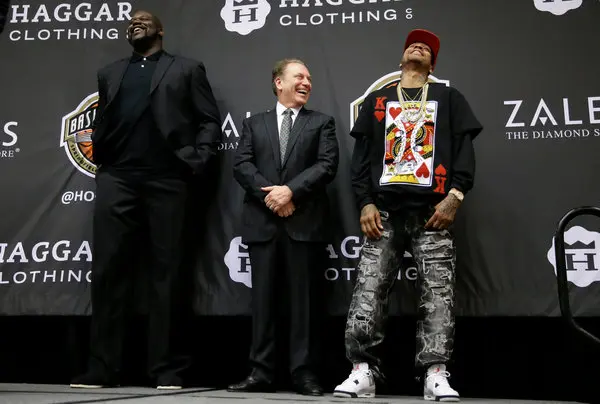
However, during the ‘90s and early 2000s, the collaboration between athletes and fashion shifted from lounge and streetwear to high-end, upscale attire. After his partnership with Armani, former professional soccer player David Beckham quickly acquired a reputation for upholding a stylish appearance. Beckham’s involvement in fashion made athletes’ endorsement deals and involvement with modeling increase in popularity. Junior Reece Mori-Prange has watched sports from a young age and has seen this evolution of style. He believes that styles have regressed in current times to a less professional nature.
“Back then, it was more professional, like suits and ties, and now they’re more costumes and bright colors. I kind of think that’s a bad thing,” Mori-Prange said.
The professionalism of these athletes seems to have been lost to Mori-Prange, and he misses the aesthetic it brought to the sports world.
“I feel like it brings a sense of professionalism and competitiveness against other teams and players. If they see players in their league or another sport, dressed nice, it prompts competitiveness and might make them dress nice too.” Prange said.
Streetwear brands that athletes like Michael Jordan and Shaquille O’Neal wore encouraged a more casual dress style, as opposed to the ideas of Mori-Prange values.
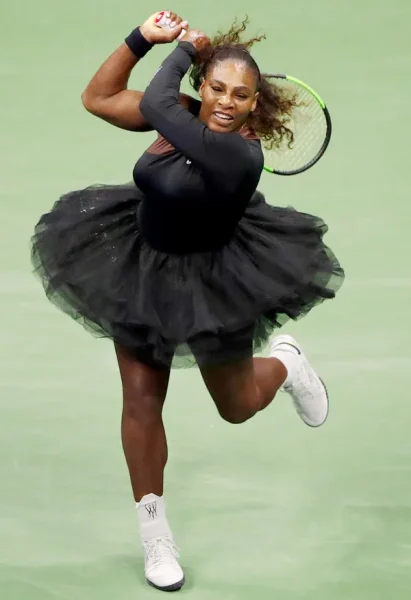
By the 2010s, high-end collaborations between well-established brands and athletes turned into athletes venturing down their own paths. One example of this was LeBron James’s fashion brand called ‘House of Hoops,’ a collaboration between Nike and Foot Locker, where he created his own basketball apparel. Like James, tennis star Serena Williams launched her own fashion brand called ‘Aneres’, her first name spelled backward.
Now, athletes are working to achieve exclusive campaigns where they aim to showcase fashion style with other professional athletes. Pro basketball player Russell Westbrook of the Denver Nuggets collaborated with Jordan to make an appearance in high-profile campaigns to showcase fashion. Similarly, professional tennis player Naomi Osaka expanded her iconic name through a partnership with Louis Vuitton that began in 2020.
Within the past 40 years, the tie between athletes and fashion has become significantly more prevalent. What once started as a way to encourage fans to buy sweats and hoodies has now become a luxury opportunity for those able to purchase items promoted by athletes. The clutch that these players have on their fans is shown in varying trends over the years.
“If I ever see one of my favorite athletes wearing a shirt or something, it might prompt me to buy it,” Mori-Prange said.
